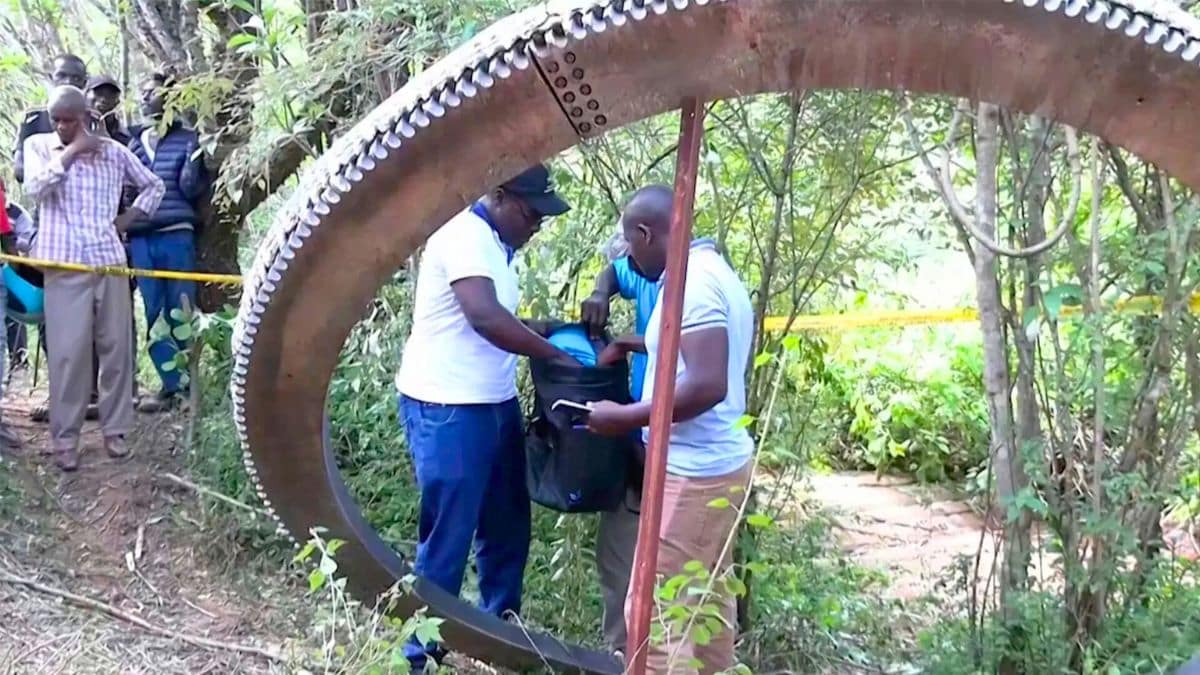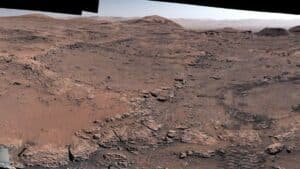On December 30, 2024, a stunning event captured the attention of both locals and space experts when a massive metal ring crashed from the sky into a Kenyan village southeast of Nairobi. The 2.5-meter diameter object, weighing approximately 500 kilograms, landed in a field without causing injuries but immediately sparked widespread curiosity and concern about space debris falling to Earth.
The mysterious metal ring and its identification
As New Year celebrations approached, villagers witnessed the extraordinary sight of a half-tonne metallic object plummeting from above. Local authorities quickly secured the area to prevent public access while experts were called in to investigate. The Kenya Space Agency (KSA) took charge of collecting and analyzing the unusual debris.
After thorough examination, scientists determined the object was a separation ring from a rocket launch vehicle. These components are specifically designed to detach during a rocket’s ascent into space. Typically, such pieces either:
- Burn up completely when re-entering Earth’s atmosphere
- Fall into uninhabited areas such as oceans
- Remain in orbit as space debris for years or decades
- Eventually descend to Earth in controlled descents
The KSA described the incident as an “isolated case” but acknowledged that the landing in a populated area represented a breach of international space safety protocols. While initial speculation connected the debris to various space programs, the KSA specifically refuted claims made by local media that linked the object to the Indian Space Research Organisation (ISRO).
In 2019, Iceland Approved the 4-Day Workweek: Nearly 6 Years Later, All Forecasts by Generation Z Have Come True
At 94, He’s One of Apple’s Biggest Shareholders, and Doctors Can’t Explain How He’s Still Alive-Coca-Cola and McDonald’s Are Part of His Daily Routine
Growing concerns about space junk hazards
The Kenyan incident highlights the escalating problem of orbital debris threatening both space operations and Earth’s surface. According to NASA tracking data, more than 27,000 sizeable objects currently orbit our planet, alongside millions of smaller fragments that remain untrackable but potentially dangerous.
Space debris travels at extremely high velocities, creating significant risks for:
| Target | Potential Impact |
|---|---|
| Active satellites | Destruction of communications, weather monitoring, and GPS services |
| Space stations | Danger to astronauts and critical research facilities |
| Earth’s surface | Property damage and potential human casualties |
| Future missions | Increased collision risks and operational challenges |
In 2024, an American family filed a lawsuit after debris from the International Space Station struck their Florida home, further emphasizing that this isn’t merely a theoretical concern. The Kessler Syndrome, a cascade effect where collisions create more debris leading to additional collisions, represents a severe long-term threat to space utilization.
International response and debris management solutions
Following the Kenya incident, authorities launched an investigation in accordance with international space laws. This event has intensified calls for improved orbital debris monitoring and management systems across global space agencies and private aerospace companies.
Several innovative approaches are being developed to address the growing space junk crisis:
- Specialized satellites designed to capture and remove debris
- Passive deorbit systems for defunct satellites
- Advanced collision-resistant materials for future spacecraft
- International cooperation on space traffic management
- Stricter regulations requiring mission planners to include end-of-life disposal strategies
Despite these promising developments, implementing large-scale solutions faces substantial technical, financial, and political challenges. The lack of clear international consensus on responsibility for historical debris further complicates matters.
It races through the universe at 300,000 km/s - and never runs out of energy
Beneath your feet: an ancient forgotten continent resurfaces in Europe
The future of sustainable space exploration
The Kenyan metal ring incident serves as a tangible reminder that space is not an infinite disposal site. While space exploration drives technological advancement and global communication, it demands responsible management practices to ensure sustainability.
The international community must prioritize effective space waste reduction policies and develop practical methods for removing existing debris. Without decisive action, the growing cloud of space junk threatens to jeopardize future exploration efforts and potentially endanger lives on Earth.
As space activities increase with more nations and private companies launching missions, the urgency of addressing orbital debris grows proportionally. The half-tonne metal ring that fell on Kenyan soil confirms long-held suspicions about the practical dangers of space debris—transforming a theoretical risk into a documented reality that can no longer be ignored.







